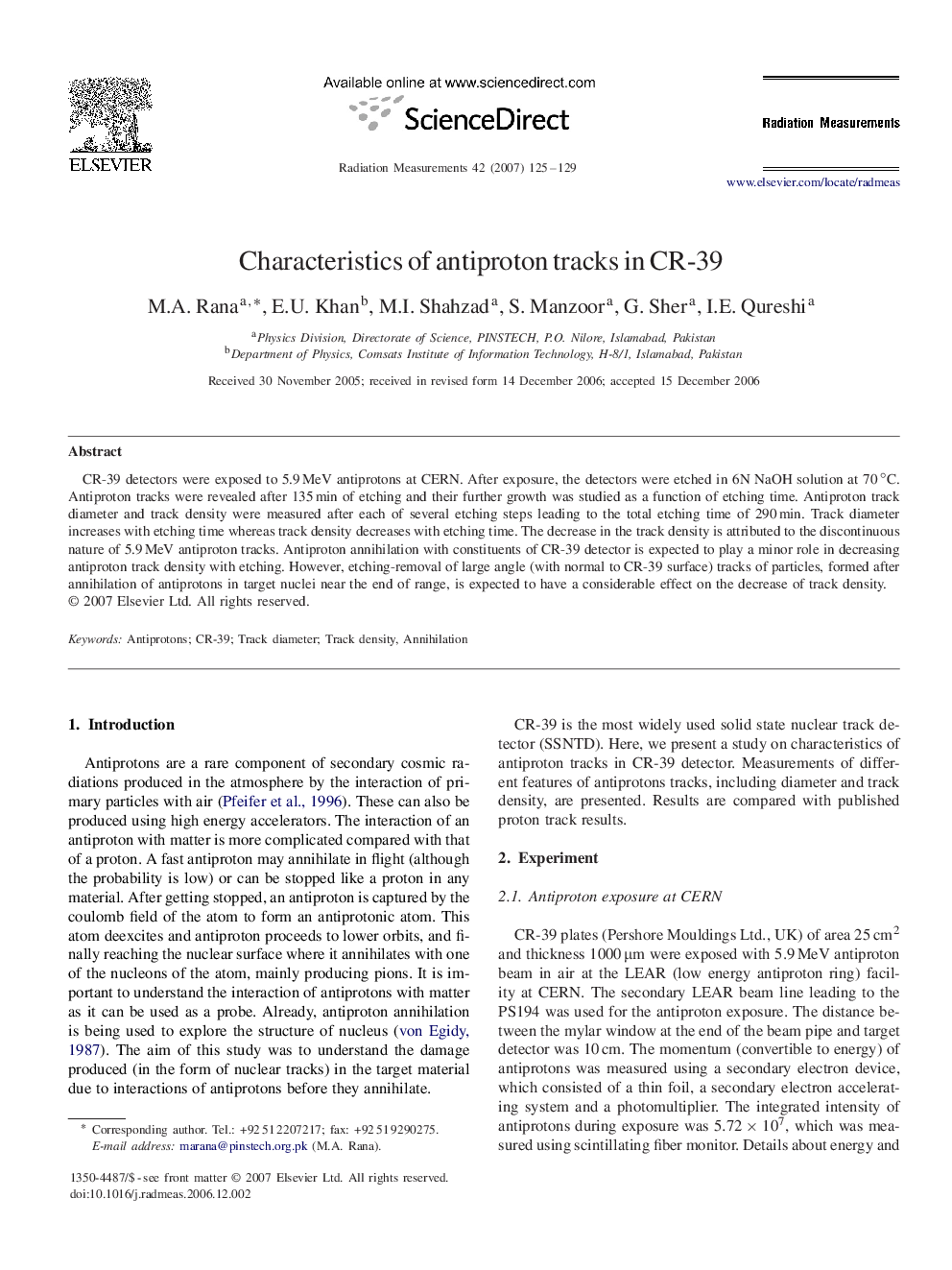| Article ID | Journal | Published Year | Pages | File Type |
|---|---|---|---|---|
| 1881285 | Radiation Measurements | 2007 | 5 Pages |
Abstract
CR-39 detectors were exposed to 5.9Â MeV antiprotons at CERN. After exposure, the detectors were etched in 6N NaOH solution at 70âC. Antiproton tracks were revealed after 135Â min of etching and their further growth was studied as a function of etching time. Antiproton track diameter and track density were measured after each of several etching steps leading to the total etching time of 290Â min. Track diameter increases with etching time whereas track density decreases with etching time. The decrease in the track density is attributed to the discontinuous nature of 5.9Â MeV antiproton tracks. Antiproton annihilation with constituents of CR-39 detector is expected to play a minor role in decreasing antiproton track density with etching. However, etching-removal of large angle (with normal to CR-39 surface) tracks of particles, formed after annihilation of antiprotons in target nuclei near the end of range, is expected to have a considerable effect on the decrease of track density.
Related Topics
Physical Sciences and Engineering
Physics and Astronomy
Radiation
Authors
M.A. Rana, E.U. Khan, M.I. Shahzad, S. Manzoor, G. Sher, I.E. Qureshi,
